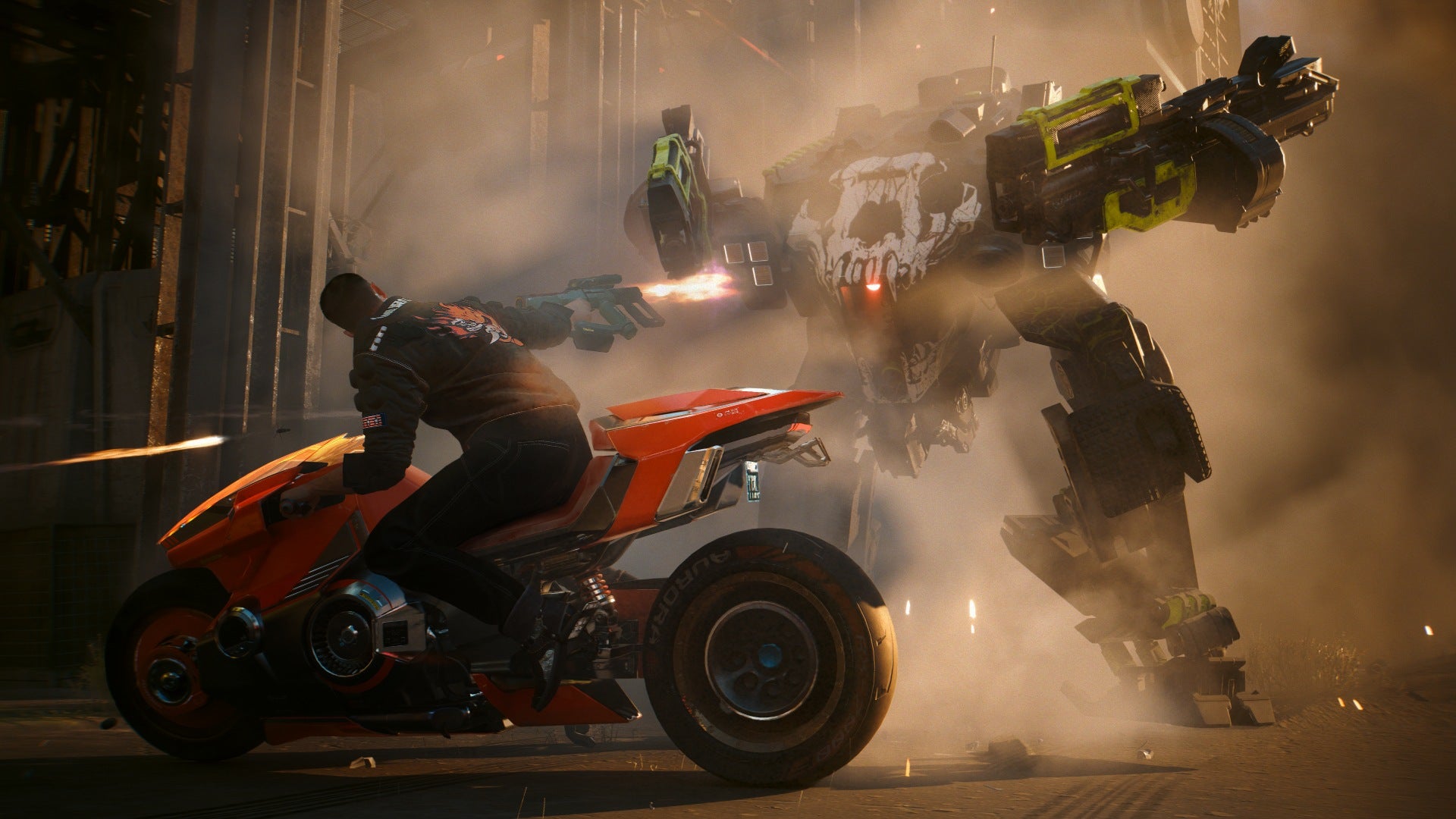After spending an hour in Cyberpunk 2077’s one and only expansion Phantom Liberty, it feels like the spy thriller side story is the actualization of a narrative everyone hasbeen touting in the years since the game’s disastrous launch. Many, including Kotaku’s own Luke Plunkett, have argued that no amount of technical changes and patches can salvage a game that was, at its core, a fairly unremarkable RPG adorned in neon lighting and dreams of being something bigger than it had the stomach to swing for. For a long time, I agreed and felt the only way to make a good capital C Cyberpunk game would be to make a new one. Now that I’ve had the chance to play some of the changes CD Projekt Red has implemented alongside its spy thriller story starring Idris Elba (Luther, Sonic the Hedgehog 2), it feels like parts of Phantom Liberty aren’t just expanding upon Cyberpunk 2077, they’re gutting it and creating something new in the empty space.
Idris Elba and the spy thriller plot might be the headliner for Phantom Liberty, but as a person who’s put hundreds of hours into the original game that’s not what sticks out to me most. CD Projekt Red has completely overhauled growth progression in a way that feels in-line with what the game always promised. If there was an alternate version of Cyberpunk 2077 where you can actually craft playstyles that don’t inevitably end with a shootout, this is it. The expansion brings new character builds and revamps old ones, and is geared toward build-defining abilities and augmentations, rather than the base game’s tedious numbers go up grind of incremental but meaningless stat boosts.
Read more: Cyberpunk 2077, Broken And Jank, Helped Me Bid Farewell To Closeted Life
The original Cyberpunk 2077 was full of neat thought experiments, but the lofty ideas always seemed to fizzle out into an indistinct cover shooter where the only strategy you’d need was to have better stats than your enemy. Now, skills available to you seem to create more open-ended fights. In Cyberpunk 2077, I was a stealth player, hacking my enemies’ optics, snapping necks, and getting out without firing a bullet. For the hour I spent in Phantom Liberty, I played a build centered around agility that I don’t think I could’ve pulled off in the main game. I was able to dash on the ground and in the air, deflect bullets with my sword, and execute devastating finishers when I got in close. I was practically Genji from Overwatch, slashing my way through the militant forces of Dogtown. This was only one of the builds the demo offered, but a cursory glance at Phantom Liberty’s updated skill trees was enough to send my mind racing to the new possibilities.

In my hour with the game, Phantom Liberty seemed to approximate the game we thought we were getting, the one promised by all the hype and trailers before release. The expansion appears to accomplish this through a number of overhauls, of which skills are just a part.
What’s new in Phantom Liberty?
For example, there are the big driving elements, which the original game made a big deal of. Hype reels saw CD Projekt Red promising “amazing attention to detail.” But shortly after the release of the original game, compilation clips of bad driving AI went viral on the internet. Now, however, if you do more crimes in Night City that draw the attention of the police, they have new, more elaborate tactics like blocking or t-boning your car, rather than just chasing you and shooting from the passenger’s seat.
There are new quest types that are meant to be infinitely replayable, which gives you more of a reason to boot up the game after you’re done beyond riding around its world and taking in the sights. And there are also small tweaks that are less exciting than what could be considered the back of the box features, like a redone phone UI to make reading some of the game’s best writing easier on the eyes.
CD Projekt Red confirmed to Kotaku that most of these systemic changes will be available in the main game (some things, like a specific new skill tree, will be only available in Phantom Liberty due to story reasons), and it all paints a picture of a game that still, even after years of patches, has somewhere to go. I’m curious to see how well those changes integrate into the main game, as sweeping adjustments like a, more robust skill tree won’t make the original lacklustre encounter design retroactively more compelling. But it does make me hopeful that Phantom Liberty will be the self-actualization of the game CD Projekt Red probably always wanted Cyberpunk 2077 to be, to the point where I’m growing disappointed thinking it will be the only expansion the studio is making before moving on to the sequel. In 2020, most thought Cyberpunk 2077 needed to be put out of its misery, but after playing a bit of Phantom Liberty, I’m starting to mourn what’s beginning to feel like a premature death.
Phantom Liberty will launch for PC, PlayStation 5, and Xbox Series X/S on September 26.
Kotaku is covering everything Summer Game Fest, from the main show on Thursday to other events happening throughout the next week. Whether you’re into larger-than-life triple-A games or intimate, offbeat indies, you can keep up with all things SGF here.

Leave a Reply